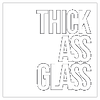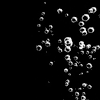Now that you’ve had a chance to get comfortable with your water pipe or dab rig, you most likely understand why it’s the method of choice for many smokers. But did you know that by adding accessories like percolators and ash catchers you can create an even more mind-blowing smoking experience? Let us explain...
What Is A Percolator?
Understand that percolators aren’t necessary when using water pipes or dab rigs (a type of water pipe), though they have become pretty standard in the smoking community. Those who use a water pipe are often looking for a smoother smoking experience. A percolator works by cooling down the smoke even more—making this process even better.
Types Of Percolators
A dab rig is all about isolating and enjoying the flavor. A water pipe makes the smoking process smoother. Both devices can be made even better with a percolator.
When shopping for a percolator, you should consider the level of diffusion you’re looking to get out of your smoking experience. The following are some of the most popular models on the market:
- Tree Percolator. This is the most classic, and one of the oldest percolator designs. A tree percolator has multiple tubes (referred to as arms) and each one has diffusion slits. TAG's tree percolators feature fixed tree arms which are welded to the bottom of the can. This reinforces the arms so they are more durable than traditional hanging trees. It also helps to reduce the drag.
- Honeycomb Percolator. Essentially, this is just a glass disc with many holes. Water sits on top of the disc and smoke diffuses through the water. This style of percolator is possibly one of the most sought after and popular diffusers available due to its low drag and high diffusion. Honeycomb percolators are also typically priced very well for the amount of functionality they provide.
- Fritted Disc Percolator. Originally designed as lab equipment, then later brought into the counter culture industry through David Goldstein, the fritted disc is literally crushed glass melted together in a disc. This provides possibly hundreds of holes for diffusion. The only drawback to this design is that it requires frequent cleaning. TAG's fritted discs are made with larger frit (pieces of crushed glass) to help encourage a longer lifespan before cleaning is required. Older versions of TAG's fritted disc were made with smaller frit which we learned very quickly would result in faster clogging. This would have highly impacted the function. Due to this, users would find their once dragless pieces had a heavy drag until the unit was fully cleaned. Current TAG versions of fritted discs are able to last much longer without cleaning, but we still recommend cleaning your fritted disc at least once a week.
- Inline Percolator. One of the simplest, typically cheapest percolators, the inline percolator actually offers a lot of value for the price. TAG has taken the standard bottom slit inline percolator and spiced it up ever so slightly to maximize function while adding joiner rods to the slits. We also call these “multiplying rods” due to the multiplying effect they have on slit count. Essentially, you take one slit, add a multiplying rod and now you have two holes of diffusion. Some of our best-functioning pieces have many slits cut plus multiplying rods, which allows for phenomenal diffusion. These multiplying rods certainly increase the purchase price but are well worth it for the achieved gains in function. Our typical philosophy is to build it the right way—quality first.
- Showerhead Percolator. Practically all diffusers on the market are variations of a showerhead. To make my point, the following percolators are considered showerheads in TAG's view (from a philosophical perspective): tree percs, matrix percs, super slit pucks, interior showerheads, inverted interior showerheads, super slit donut percs, fixed froth diffusers and fixed showerhead froth diffusers. We use blanket terms for any type of diffuser aside from disc percs and inlines as showerheads, whether there is an inner tube or not. Essentially, all new percolators on the market are variations of a showerhead. With that said, it is a great diffuser. Your iconic showerhead will have an inner tube in the center which flows out to slits on the bottom, allowing the chamber to hold water without losing the water level. Also because of this, it allows an even percolation given that the slits are sized correctly.
- Matrix Percolator. As stated above, the matrix percolator is another variation of the showerhead, which is differentiated by the inner rings of the matrix creating a lattice-like structure. These almost act as multiplying rods, turning one big slit into two, three or even four holes. The matrix perc is an excellent percolator due to its low drag and high diffusion efficiency.
- Turbine Percolator. TAG generally does not use the turbine percolator as a diffusion device. Another term for this would be “spinning splash guard.” We view the spinning splash guard as the optimal way to stop water from reaching your lips on honeycomb and fritted disc devices. The angled cut slits direct the water toward the wall of the chamber in a cyclone motion. This directs all the momentum of the water toward the wall while the smoke is permitted to travel upward out of the pipe. Our personal opinion on a turbine percolator is that it is inadequate as it causes an undesirable mouthfeel and inconsistent draw due to the slit size and lost momentum from pushing water against the walls. The turbine perc is mostly a sales tactic due to the visual attractiveness when purchasing online or seeing it in person. In terms of function, the turbine perc is sub-par when used as the main method of diffusion.
- Faberge Egg Percolator. The Faberge egg design is a Mothership original design, based on the Swiss perc made by Nate Dizzle. In my opinion, the main purpose of this design is not to encourage diffusion but rather to create a draw that is unique and desirable. Faberge eggs hit like nothing else and provide a great chug due to the pathways the water takes as it travels upward.
- Spiral Percolator. This is another type of showerhead in TAG's opinion and is essentially an interesting way of diffusing smoke through water. In my opinion, unless this is being used with a Glycerin coil, its design is not worthwhile. Once again, this percolator seems to be more of a sales tactic—something that looks cool but functionality-wise is really no better than your standard showerhead.
Then What Is An Ash Catcher?
An ash catcher sits in the downstem of the water pipe and can be used in addition to a percolator. This attachment is specially designed to capture debris and it keeps both ash and resin from entering your water pipe or dab rig. Ash catchers use water to filter the ash out of the water pipe prior to smoking through the device. This helps clean and maintain the water pipe, so you’ll be able to use it for a long time. Many ash catchers are also designed to percolate the smoke.
Types Of Ash Catchers
Did you know that Thick Ass Glass ash catchers can actually be converted into standalone mini water pipes! The following are a few of our most popular models:
- Showerhead Ash Catcher. Currently, TAG offers an interior showerhead ash catcher which works by holding the water above the slits. This actually forces diffusion to occur on a higher percentage of slits while in use due to the water always being on top. Traditional showerheads can fall victim to water being dislocated and taken away from the slits which, as you know, if there is no water over the slits diffusion can’t occur. Interior showerheads are great low-drag, high-diffusion percolators.
- Tree Ash Catcher. TAG offers fixed tree ash catchers which provide durability along with efficient diffusion. With cheaper style tree perc ash catchers, the tree arms are not fixed or welded to the bottom of the chamber. Without fixing the trees to the bottom, the tree perc can be very fragile and will certainly be the first thing to break if you ever drop your glass.
- Honeycomb Ash Catcher. TAG's honeycomb ash catchers feature a recycle style chamber to combat the stacking of a honeycomb. As you may be aware, honeycombs stack water too efficiently which causes the water to rise and leave the glass. In an ash catcher, this is a huge problem. If the water leaves the ash catcher then enters the water pipe, it can affect your water level and therefore degrade the function.
- Non-Diffusing Ash Catcher. The functionality of this design was inspired by Sovereignty Glass. By simply allowing a chamber full of water to sit beneath the slide, any falling ash will hit the water and remain captured in the water. A non-diffusing ash catcher keeps the ash contained, so your pipe can stay cleaner longer. The TAG non-diffusing ash catcher is shaped like a drop down. The reasoning behind this was to keep the ash catcher’s joint at the same level as your water pipe’s joint so it wouldn’t disturb the intended use of your water pipe. Many users prefer this style because it does not provide additional unnecessary diffusion and has less of an impact on the overall drag.
Shop Percolators and Ash Catchers from Thick Ass Glass
Browse our massive selection of water pipes, accessories and more. Have a question or need more information about our ash catchers or percolators? Reach out today.


